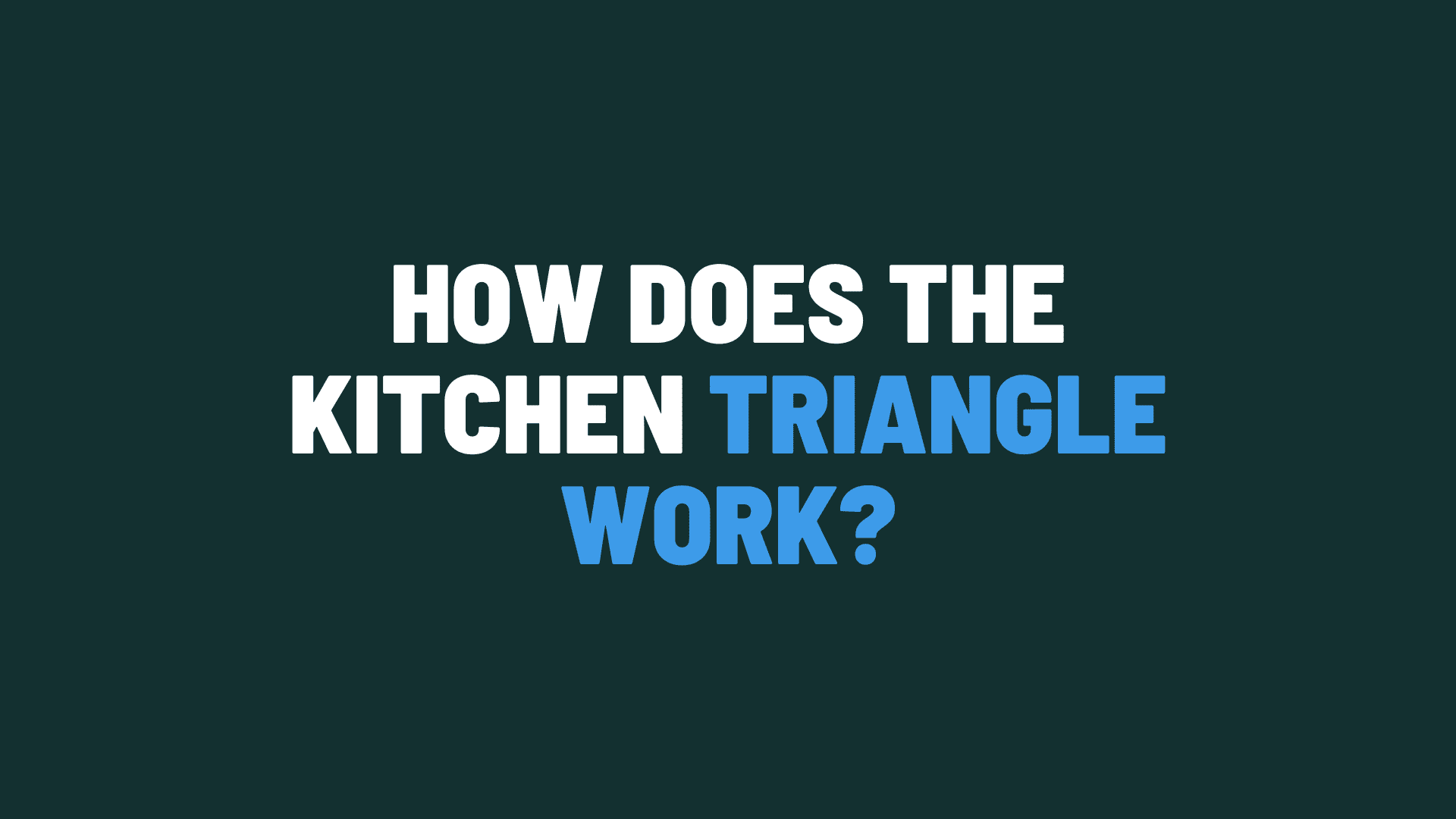
Question: How Does The Kitchen Triangle Work?
Answer: The kitchen triangle works by connecting the sink, stove, and refrigerator, creating an efficient workspace. It minimizes walking distance between these key areas, improving workflow during meal preparation.
Understanding the Kitchen Work Triangle
The kitchen work triangle represents a simple yet effective design principle. It connects the three main work areas: the sink, the stove/cooktop, and the refrigerator. This triangle aims to create an efficient workspace by minimizing steps between these crucial points. Understanding its function can significantly improve your kitchen’s functionality and your cooking experience. This guide explains how the kitchen triangle works and how to optimize it for your needs.
The Core Principles of the Kitchen Triangle
The kitchen triangle’s effectiveness depends on proper distances between each point. The total distance of the three sides should ideally fall between 12 and 26 feet. Each leg should measure between 4 and 9 feet, preventing excessive walking and ensuring easy access to each work zone. This setup minimizes wasted movement during meal preparation, promoting a smooth and efficient workflow.
Imagine a typical cooking scenario: you retrieve ingredients from the refrigerator, wash them at the sink, and then move to the stove to cook. A well-designed kitchen triangle facilitates this flow seamlessly. It reduces back-and-forth movement, saving time and energy. This efficient layout also contributes to safety by minimizing traffic congestion and potential collisions in the kitchen.
Click the link to read more about Blue Kitchen Refacing
Related Article: What Are The Disadvantages Of A Kitchen Triangle?
Related Article: What Is The Golden Triangle In The Kitchen?
Common Mistakes to Avoid with the Kitchen Triangle
Several common design errors can disrupt the kitchen triangle’s effectiveness. Placing appliances too close together can create a cramped workspace, hindering movement. Conversely, excessive distance between appliances increases walking time, reducing efficiency. Obstructions, like kitchen islands or large cabinets, within the triangle also disrupt the flow and impede movement.
Interrupting the triangle’s lines with traffic flow from doorways or heavily used pathways can also lead to congestion and safety hazards. Consider the location of doors and high-traffic areas when designing your kitchen layout. Avoid placing the refrigerator, sink, or stove in a location that obstructs these pathways.
Modern Adaptations of the Kitchen Triangle
Modern kitchens often feature multiple cooks and diverse cooking styles. The traditional kitchen triangle may not always suit these evolving needs. Think about incorporating multiple work zones or specializing areas for specific tasks, like baking or prepping. These adaptations address the limitations of a strict triangle layout in a contemporary kitchen.
For example, a secondary preparation sink near the refrigerator can enhance efficiency for multiple cooks. A separate cooktop and wall oven combination can also improve workflow. These modifications cater to the demands of modern kitchens, providing flexibility and enhancing functionality for all users.
Benefits of an Effective Kitchen Triangle
A well-designed kitchen triangle offers numerous advantages. It improves efficiency by reducing travel time between work areas. This increased efficiency saves time and energy, making cooking a more enjoyable experience. A functional kitchen triangle also improves safety by minimizing traffic and potential hazards.
Furthermore, a well-planned layout enhances the overall organization and aesthetic appeal of the kitchen. It promotes a clear and logical flow, reducing clutter and improving the overall functionality of the space. This contributes to a more pleasant and efficient cooking environment.
Conclusion
The kitchen triangle remains a valuable design principle for creating a functional and efficient kitchen. By understanding its core principles and adapting them to your specific needs and layout, you can optimize your workspace for a more enjoyable and productive cooking experience. Remember, while the kitchen triangle provides a helpful framework, flexibility and adaptation are key to creating a kitchen that truly meets your individual requirements.

Blue Malue Get in touch with Blue here.
